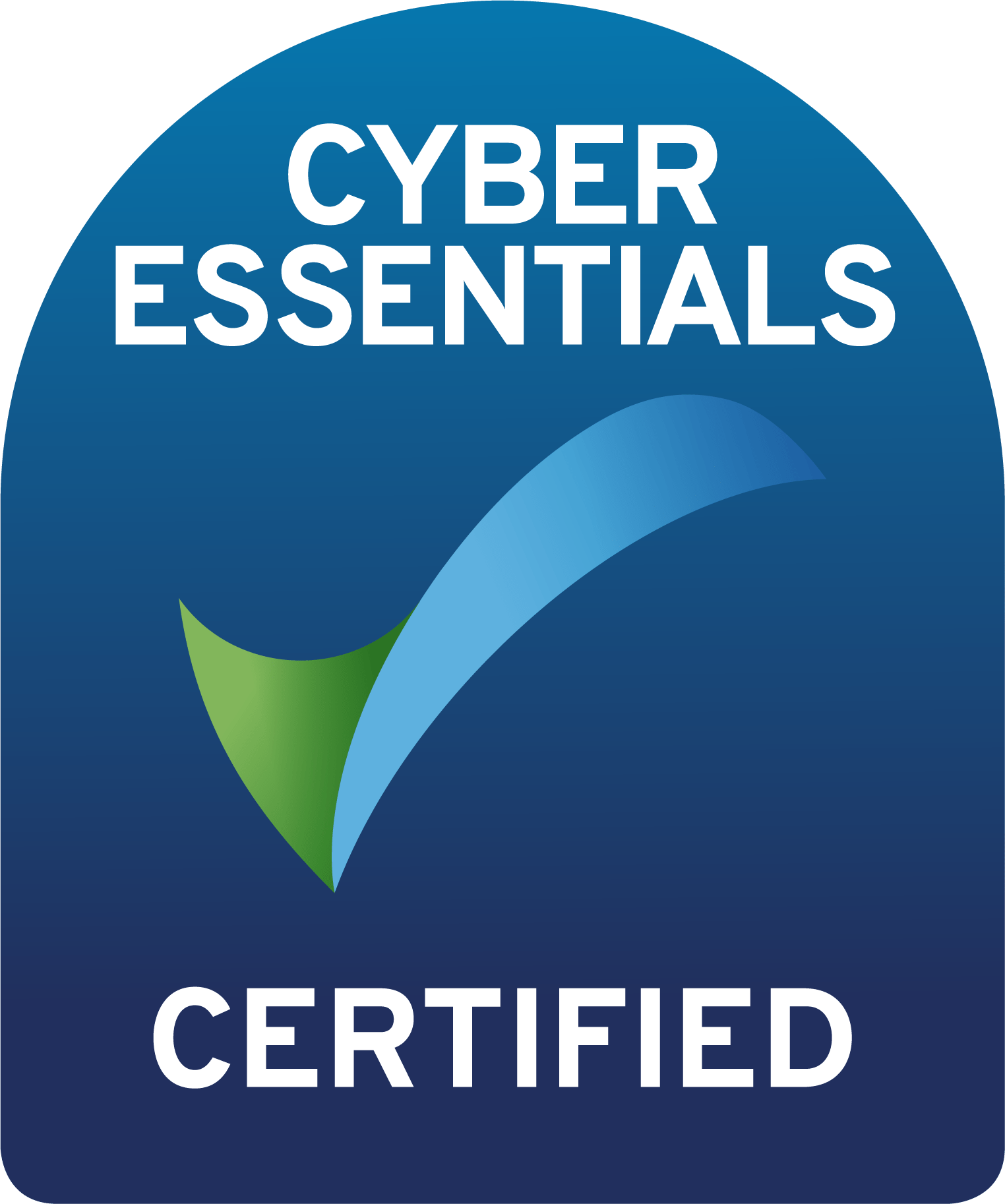





Machining Technician Level 3 Apprenticeship
This occupation is found in the Advanced Manufacturing and Engineering (AME) sector. AME includes Aerospace, Automotive, Maritime Defence, Nuclear and Construction sectors.
Machining technicians produce complex and precision machined products that are typically used in machinery. For example, aeroplanes and vehicles. They can also produce bespoke components or products for domestic appliances or medical equipment. They use a variety of machines to carry out their work. For example, centre lathes, vertical and horizontal milling machines, horizontal and cylindrical grinding machines, Electro discharge machines, single and multi-axis Computer Numeric Control (CNC) machine tools centres, Gear cutting and Gear Grinding machines.
Looking for a new career, job or maybe a qualification to take your current role to the next level?
Previously apprenticeships were primarily aimed towards 16-18 year olds but government reforms introduced in March 2017 mean that there is no longer an upper age limit for commencing an apprenticeship, even if you already possess a degree or higher level qualification (all applicants must be eligible for funding).
Starting an apprenticeship is dependent on your age and whether you have secured an offer of an apprenticeship from an employer.
You can apply for an apprenticeship while you’re still at school, but you cannot start until you have officially left school and completed your exams.
You need to be 16 or over by the end of the summer holidays to start the apprenticeship. You may start an apprenticeship at 15 years of age if your 16th birthday is between the last Friday of June and 31st August and provided you have completed your exams.
Provided you have left school and have an employment offer in place, then starting employment as an apprentice can occur throughout the year.
If you successfully apply for a vacancy, you may be able to start employment straight away.
Likewise, if you are already in employment and your employer is looking to train you through an apprenticeship, sign-up and enrolment can take place quite quickly.
However, the start date for attending college for training, where required, or if delivered online, when sessions begin, will vary depending on the type of apprenticeship.
Some apprenticeships will have fixed attendance with training on-campus commencing at the start of the autumn term, with no availability for starting the training mid-year.
For other apprenticeships where the training is delivered entirely online, it may be possible to commence the training immediately.
Whichever delivery method applies, this will be communicated to you and your employer post-employment and sign-up.
If you are ready to make an application then please select the correct application button from the menu below.
| Level | Level 3 |
|---|---|
| Location | Colchester Braintree |
| Duration | 42-48 months to complete |
| Campus / Adult Skills Centre | Colchester Campus Braintree Campus |
| Attendance | 1 day a week college attendance for 4 years (day release) |
| Apprenticeship Funding Band (Levy paying employers) | £27,000 |
| Employer Contribution Fee (Non-levy paying employers) | £1,350 |
Overview of the role
Setting up machines prior to production as well as monitoring and correcting them as needed.
Occupational Summary
The broad purpose of the occupation is to produce complex and precision work by machining components. Components are machined from metal or specialist materials using conventional or CNC machine tools. Machining Technicians interpret information and plan their activities. They also set up, operate, adjust or edit machine tool settings. When using CNC equipment, they can produce, prove or edit programmes. They inspect components and machinery, report issues and support continuous improvement activities. They typically work in a manufacturing environment. Depending on the organisation, they may be required to work at height or work shifts.
In their daily work, an employee in this occupation interacts with other Machining Technicians. They also interact with various stakeholders. They typically report to an engineering or manufacturing team leader. Typically, this would be as part of a defined or cross functional team. They may also interact with customers, suppliers, colleagues, quality auditors and regulators.
An employee in this occupation will be responsible for the quality and accuracy of their work. They also must work efficiently and be productive in the work they undertake. They must work both individually and as part of a larger team. They must work within the relevant health, safety and environmental regulations. This includes the use of appropriate protective clothing and equipment. They are responsible for the correct use and housekeeping of machinery, tools and equipment. All work must be completed in a safe and efficient manner as directed by supervisory staff.
Typical job titles include:
Knowledge
K1: Awareness of health and safety regulations, relevance to the occupation and the Machinist’s responsibilities. Health and Safety at Work Act; Control of Substances Hazardous to Health (COSHH); Working in Confined Spaces; Lone Working; Provision of Work Equipment Regulations (PUWER); Electrical Safety and Compliance; Noise Regulation; Slips Trips and Falls; Display Screen Equipment; The Reporting of Injuries, Disease and Dangerous Occurrences Regulations (RIDDOR), Manual Handling, Personal Protective Equipment (PPE), risk assessments and method statements and the implications of not adhering to guidelines and procedures.
K2: Awareness of hazardous waste regulations; Recyclable materials and waste disposal procedures and the implications of not complying with regulations and procedures.
K3: Awareness of environment and sustainability regulations, relevance to the occupation and the Machining Technician’s responsibilities. Environmental Protection Act; Sustainability; Waste Electrical and Electronic Equipment Directive (WEEE); Energy monitoring; Data logging to optimise energy performance; The Climate Change Agreements; Carbon Reduction Commitment (CRC).
K4: Engineering representations, drawings, graphical information and specifications.
K5: Engineering mathematical and scientific principles: calculations, conversions, flow rates and equipment sizing.
K6: Planning techniques, time management, workflow, work scheduling, work plans, documents and work categorisation systems.
K7: Engineering materials and their structure, properties and characteristics; impact on use, how and why engineering materials can fail.
K8: Awareness of engineering standards and regulations: British Standards (BS); International Organisation for Standardisation standards (ISO); European Norm (EN); Standard Operating Procedures (SOP).
K9: Tooling and work-holding devices: purpose and operation of devices for carrying out complex machining tasks.
K10: Engineering machining processes tools and equipment: Milling; Turning; Grinding; Electro Discharge Machine (EDM); Gear Cutting.
K11: Machining operations and techniques to produce complex components.
K12: Quality assurance: principles, practices and record keeping.
K13: Fault finding, diagnostic methods and techniques for identifying engineering and manufacturing problems. Escalation techniques.
K14: Use and application of measurement, calibration and testing equipment.
K15: Communication techniques: verbal. Machining industry terminology.
K16: Documentation – electronic and paper.
K17: Housekeeping and maintenance practices and techniques: planned, preventative and predictive methods, frequency, and reactive activities.
K18: How organisations vary regarding their work, culture, values and production processes in the Machining industry.
K19: Inspection processes and procedures; documentation and escalation.
K20: Technological development and innovation in the machining sector; Industry 4.0; digitalisation.
K21: Continuous improvement principles and practices: Lean; Six Sigma; Kaizen.
K22: Equality, diversity and inclusion requirements in the workplace.
K23: Stock and services considerations. Availability, stock lead times. Correct handling. Stock value. Faulty stock and returns process.
Skills
S1: Comply with statutory health and safety regulations and procedures.
S2: Comply with environmental, ethical and sustainability regulations and procedures: safe disposal of waste, re-cycling or re-use of materials and efficient use of resources.
S3: Prepare and set up conventional or CNC machines.
S4: Operate and adjust conventional or CNC machines.
S5: Apply risk assessment and hazard identification processes and procedures in the work area.
S6: Monitor, obtain and check stock and supplies, and complete stock returns.
S7: Record information – paper based or electronic. For example, energy usage, job sheets, risk assessments, equipment service records, test results, handover documents and manufacturers’ documentation, asset management records, work sheets, checklists, waste environmental records and any legal reporting requirements.
S8: Read and interpret information. For example, data and documentation used to produce machined components.
S9: Apply engineering, mathematical and scientific principles.
S10: Plan and organise own work and resources.
S11: Follow and apply inspection, quality assurance procedures and processes.
S12: Select machining process.
S13: Select and setup tooling and work holding devices.
S14: Set and adjust machine operating parameters. For example, setting feeds and speeds for roughing and finishing operations, downloading and editing programmes when using a CNC machine tool.
S15: Apply machining operations and techniques to produce complex components with features. For example, parallel; stepped; angular diameters and faces; grooves; slots; recesses and undercuts; radii and chamfers; internal and external forms and profiles; reamed; bored; drilled and electro eroded holes; internal and external screw threads.
S16: Measure and check components.
S17: Select and check condition of tools and equipment. Identify issues, resolve and take action as needed.
S18: Identify and action issues in the manufacturing process.
S19: Apply fault-finding and diagnostic testing procedures to identify faults. Diagnose and resolve issues. Escalate issues.
S20: Maintain the work area and return any resources and consumables.
S21: Communicate with others verbally. For example, colleagues and stakeholders.
S22: Follow machine shut down, safe isolation, handover, start up or warm up procedures. Escalate issues.
S23: Apply continuous improvement techniques. Devise suggestions for improvement.
S24: Apply ethical principles.
S25: Apply team working principles
EAL Level 3 Extended diploma in Machining (Development Knowledge)
This is delivered for 1 day a week in college with the following subjects each year.
The Level 3 knowledge qualification units are:
Year 1 – delivered in our Braintree campus
Engineering and environmental health and safety
Preparing and using lathes for turning operations
Preparing and using milling machines
Year 2 – delivered at Colchester Campus
Engineering maths
Advanced manufacturing CNC milling techniques
CNC programming/machining
CAD/CAM
Year 3 – delivered at Colchester Campus
Communication for machinists/engineers
Properties and applications of engineering materials
Advanced manufacturing CNC turning techniques
Further Engineering mathematics
Year 4 – This will be a mixture of the first 6 months onsite in Colchester, then remote supporting for gateway into EPA.
Apprentices will also undertake a Level 3 Competency Diploma, which will be assessed in the work place for 2 years, and the competency qualification units will be discussed and agreed with the employer.
English and Maths
Apprentices without level 2 English and maths will need to achieve this level prior to taking the End-Point Assessment. For those with an education, health and care plan or a legacy statement, the apprenticeship’s English and maths minimum requirement is Entry Level 3. A British Sign Language (BSL) qualification is an alternative to the English qualification for those whose primary language is BSL.
Professional recognition
This standard aligns with the following professional recognition:
- Royal Aeronautical Society (RAeS) for Engineering Technician (EngTech)
- Institution of Engineering and Technology (IET) for Engineering Technician (EngTech)
- Institute of Mechanical Engineers (IMechE) for Engineering Technician (EngTech)
What are the entry requirements?
Individual employers will set the recruitment and selection criteria for their Apprenticeships however, English and maths at 9-4 is required.
This section outlines the information that you and your employer need to know about your end-point assessment (EPA). You and your employer should also read the end-point assessment plan for the full details including roles and responsibilities, assessment method requirements and re-sits and re-takes.
What is an end-point assessment and why it happens
An EPA is an assessment at the end of the apprenticeship. It assesses your competence against the knowledge, skills and behaviours (KSBs) on the occupational standard. You will have been trained on them during your training, both on and off the job. The EPA is your chance to show an independent assessor you can do the occupation you have been trained for. Your employer will only recommend you start the EPA when you have finished your training and both your employer and you think you are ready. Your employer will choose an end-point assessment organisation (EPAO) to deliver the EPA. Your employer and training provider should provide you with support on what to expect and how to prepare for your EPA.
The typical length of the on-programme (training) part of this apprenticeship is 42 months. The end-point assessment period will typically last 3 months.
The grades available for this apprenticeship are:
Practical demonstration with questions
- fail
- pass
Interview underpinned by a portfolio of evidence
- fail
- pass
- distinction
Knowledge test
- fail
- pass
- distinction
At the end of the apprenticeship, and having passed the EPA, you will be awarded with your apprenticeship certificate.
Gateway
The gateway is the point when all on-programme training and any mandatory qualification requirements have been met. When you have completed your training and your employer says you are competent in your occupation, you enter the gateway. The EPAO will check any mandatory qualifications are complete. They will tell you how to submit any necessary documents (for example, a portfolio). After the EPAO confirms that you have met all the requirements, the EPA starts.
When you reach the gateway, you need to complete the following:
- have achieved English and mathematics qualifications (including those with an education, health and care plan or a legacy statement) as specified by the apprenticeship funding rules. British Sign Language (BSL) qualifications are an alternative to English qualifications for those who have BSL as their primary language.
- passed any other mandated qualifications listed in the occupational standard. For the machining technician, The qualification(s) required is: EAL L3 Extended diploma in Machining (Development Knowledge) or Pearson BTEC L3 diploma in Advanced manufacturing engineering (Machining) (Development Technical Knowledge) or City and Guilds Machining technician (1273)
- for the interview underpinned by a portfolio of evidence you must submit: portfolio of evidence
- for the practical assessment with questions the EPAO must discuss with the employer the suitable machine(s) type and components produced by the apprentice in the workplace in the normal course of the role. The EPAO will then use this information to select an appropriate assessment task from a bank of tasks that have been developed in consultation with employers. The apprentice and employer are not to be told the machine type and component to be produced in advance of the assessment
Where geometric tolerances are appropriate to the specific features these will be set by the EPAO in accordance with the practical demonstration task.
Portfolio of evidence requirements:
The apprentice must compile a portfolio of evidence during the on-programme period of the apprenticeship. It should only contain evidence related to the KSBs that will be assessed by this assessment method. It will typically contain 8 discrete pieces of evidence. Evidence must be mapped against the KSBs. Evidence may be used to demonstrate more than one KSB; a qualitative as opposed to quantitative approach is suggested.
Evidence sources may include:
- workplace documentation and records, for example:
- workplace policies and procedures
- witness statements
- annotated photographs
- video clips (maximum total duration 10 minutes); the apprentice must be in view and identifiable
This is not a definitive list; other evidence sources can be included.
The portfolio of evidence should not include reflective accounts or any methods of self-assessment. Any employer contributions should focus on direct observation of performance (for example, witness statements) rather than opinions. The evidence provided should be valid and attributable to the apprentice; the portfolio of evidence should contain a statement from the employer and apprentice confirming this.
The EPAO should not assess the portfolio of evidence directly as it underpins the interview. Independent assessors should review the portfolio of evidence to prepare questions for the interview assessment method. They are not required to provide feedback after this review.
What can I do next?
Completion of the Apprenticeship is designed to be recognised by relevant Professional Engineering Institutions at the appropriate level of professional registration (EngTech). In the case of the Military specific pathway in the Aircraft Maintenance Fitter/Technician Standard, professional competence will be recognised by the Military Independent Assessment Authority (MIAA).
Possible progression into further training as a Higher Apprentice Level 4/5 or a Degree Apprenticeship level 6 with the support of a suitable employer.
How often do I have to attend college?
College attendance of one day per week will be required over the duration of the course.
Apprentices will attend college once a week for a mix of theory and practical 09:00 – 17:00, on different days each year, for a total of 4 years.
This will be in conjunction with further assessment in the workplace. Our well-equipped workshops will allow apprentices to carry out practical work in a safe environment.
Before you proceed to apply for an apprenticeship, please read through the information which relates to your age group below, and then select the correct application button from the menu located further down the page.
Aged between 15 and 18
The application window for joint applications for full-time courses and apprenticeships starting in September 2026 is open from Wednesday 1st October 2025.
In order to study an apprenticeship you must have an employer willing to take you on as an apprentice and have an offer of employment in place by September, ready for enrolment.
The information below applies to those:
- currently in year 11 and looking to study on an apprenticeship upon finishing school
- currently in year 11 and looking to make a joint full-time and apprenticeship application, so that both options are available to be pursued upon finishing school (although you can apply for both options you will eventually need to choose between a full-time programme or apprenticeship, you cannot do both at the same time)
- currently in year 12* on a full-time course and looking to find an apprenticeship to start after the end of the summer term
If you are interested in an Apprenticeship but do not yet have a contract of employment from an employer, we strongly advise you to apply for a full-time programme as well so you have a back-up. We will process both your full-time application and apprenticeship application until you inform us that you have secured an employer and have an Apprenticeship contract in place, at which point your apprenticeship application will take priority.
If you do have an employer with an Apprenticeship contract of employment in place, we still strongly advise that you apply for a full-time programme as well so you that you have a back-up in case this falls through.
Once you have read the above please click the red button underneath. Then click the button ’15 – 18 Years – Apply Online’ in the menu and you will be taken to the next stage of the application process.
*If you are currently in year 12 and 13, but looking to find an apprenticeship and switch mid-year then please contact our Apprenticeship Admissions Team where they will advise you on suitable vacancies.
If you are unsure about any of the above and would like to speak to our apprenticeships team directly then please contact us using the below:
01206 712043 – Applicant Enquiries or email:
Aged 19+
In order to study an apprenticeship you must have an employer willing to take you on as an apprentice and with an offer of employment in place.
Please read through the information below and follow the information that applies to your current status.
If you have found an employer willing to take you on as an Apprentice and they are ready to put a contract of employment in place, please click the red button located underneath this section, which will take you to the first stage of the application process. Then click the button ’19+ Years – How to Apply’ where you will be taken to the next stage of the application process.
I am already in employment and my employer would like to put me through an apprenticeship
If you are already in employment then please contact our Apprenticeship Admissions Team where they will work with you and your employer to complete the sign-up and enrolment onto the programme.
01206 712043 – Applicant Enquiries or email:
I don’t have an employer
If you do not have a contract offer of employment from an employer in place then there are other options available to you:
Apply for a vacancy
Employers can recruit for apprentice positions all year round. We have apprenticeship vacancies listed on our website throughout the year in a variety of industries and with employers small, medium and large.
Join Our Talent Pool
All you have to do is complete and submit our Talent Pool application form, attend a pre-screening assessment/interview and be available when contacted. We will then send your details along with your profile to employers looking for an apprentice, inform you if you are selected for interview, and send you guidance to prepare you for interview.
If you are unsure about any of the above and would like to speak to our apprenticeships team directly then please contact us using the below:
01206 712043 – Applicant Enquiries or email:
Employer Application Enquiries
If you would be interested to find out more about how this apprenticeship can work for your business or already have a member of staff who this apprenticeship would be perfect for please contact us using the ‘Hire an Apprentice: Enquire Here’ button in the menu below.
How is my business going to benefit from an Machining Technician Apprentice?
Having an Apprentice Engineering Machinist employee that can demonstrate the following behaviours:
- Personal responsibility, resilience and ethics. Comply with health and safety guidance and procedures, be disciplined and have a responsible approach to risk, work diligently at all times, accept responsibility for managing time and workload and stay motivated and committed when facing challenges. Comply with any organisational policies/codes of conduct in relation to ethical compliance
- Work effectively in teams. Integrate with the team, support other people, consider implications of their actions on other people and the business
- Effective communication and interpersonal skills. open and honest communicator, communicating clearly using appropriate methods, listening to others and have a positive and respectful attitude
- Focus on quality and problem solving. Follow instructions and guidance, demonstrates attention to detail, follow a logical approach to problem solving and seek opportunities to improve quality, speed and efficiency
- Continuous personal development. Reflect on skills, knowledge and behaviours and seeks opportunities to develop, adapt to different situations, environments or technologies and have a positive attitude to feedback and advice
What about support in the workplace?
Skilled and knowledgeable staff must be available to support the apprentice as they complete work- based tasks
How is my business going to benefit from an Apprentice?
Fill your skills gaps: an Apprentice’s training is tailored to your organisation’s needs, resulting in a loyal, motivated work force Increase productivity by developing staff skills and expertise.
Value for money: a cost effective way to attract new talent and fresh eyes into your organisation.
Cost saving: we can advertise your vacancies and recruit the best candidates for your needs.
An industry recognised professional qualification can be built into the course which your apprentice will bring back to the business, providing value for money and a return on investment in their career as well as bringing back up to date knowledge from college.
What is expected of the employer?
When taking on an apprentice, there are certain expectations that must be met by the both the employer and the apprentice. As the employer, you are expected to:
- Pay the minimum wage for an apprentice
- Provide a full contract of employment for your apprentice
- Offer the same benefits package to your apprentice as other employees
- Arrange for a workplace mentor for your apprentice
- Deliver a safe working environment
- Ensure opportunities are made available to allow the learning of new skills and knowledge within the apprentice’s contracted working hours
- Ensure the apprentice is given opportunities within contracted working hours to develop maths and English skills, where a GCSE grade A-C (or higher) has not been previously attained
What will this cost my business?
Levy paying employers can access levy funds to pay for this programme, and our blended learning model can contribute to the 20% off- the-job training requirement.
The introduction of the Apprenticeship Levy in April 2017 has changed the way that government funds apprenticeships in England. All businesses operating within the UK with a wage bill of over £3million are required to contribute to the Apprenticeship Levy.
- If the levy applies to your business you will be required to pay 0.5% of your entire wage bill into the levy. This will be offset against a levy allowance worth £15,000 for each tax year.
- You will only be able to use your levy payment for government backed apprenticeships.
- Levy payments will expire after 18 months.
Speak to an Advisor at our employer engagement team on 01206 712043 to make your levy payments work for you.
Levy paying employers will pay the full cost of the agreed funding band using their Digital Apprenticeship account.
Where applicable, non-levy paying employers will need to contribute 5% of the maximum funding band as published by the Skills Funding Agency for the delivery of training and assessment for their apprenticeship.
An employer contribution fee will be required for:
- All non-levy paying employers recruiting an apprentice aged 22 or over*
*For non-levy paying employers full government funding is available for an apprentice aged between 16-21 years old and apprentices aged between 22-24 years old who have either an Education, Health and Care Plan (EHCP) or has been in the care of their local authority, where the employer employs less than 50 employees.
Any associated cost to the individual will be made clear at the interview.
What about support in the workplace?
Skilled and knowledgeable staff must be available to support the apprentice in the workplace.
Does the apprentice have to attend college?
College attendance where required will be communicated post-application and enrolment.
Why should I choose Colchester Institute to support my recruitment and retention?
Colchester Institute is the largest college provider of apprenticeships in Greater Essex. We are experts at connecting the right people, to the right training, to the right business – and when it comes to Apprenticeships, our Apprenticeship Advisors can support your business every step of the way.
As part of our comprehensive service, we offer:
- Fee-Free Recruitment Service: We offer recruitment assistance at no cost to you.
- Advertisement of Apprenticeship Vacancies: We’ll promote your apprenticeship opportunities to attract the right candidates.
- Application Management: We handle applications according to your unique criteria, ensuring a streamlined process.
- Candidate Matching: Leveraging our extensive network, we can identify and recommend suitable candidates.
- Pre-screening: We conduct initial assessments to ensure candidates meet course requirements.
- Advice on Grants and Funding.
In addition, our team provides:
- Dedicated Account Manager: You’ll have a single point of contact for personalised support.
- Industry-Experienced Trainers: Our trainers bring real-world expertise to deliver high-quality training.
- Bespoke Programmes: We can tailor apprenticeship programmes to align with your business goals.
- Essex Priority Skills Focus: Our programmes are designed to address the priority skills needs of the Essex region.
- Free Employer Events: Take advantage of networking opportunities and stay updated on industry trends through our free events.
- Personalised Apprenticeship Levy Advice: Receive expert advice tailored to your specific needs.
- Ongoing Support: Our team conducts regular visits, providing support and guidance to both you and your apprentice.
Partner with Colchester Institute to unlock the full potential of apprenticeships for your business. Let us help you find the right talent and develop the workforce you need for success.
Off-the-Job Training (OJT) is one of the key requirements for all apprenticeship standards.
Apprentices must spend 20% of their contracted working hours undertaking Off-the-Job Training, which is defined as “learning undertaken outside of the normal day-to-day working environment and leads toward the achievement of an apprenticeship.”
Off-the-Job Training must be directly relevant to the apprentice’s programme and teach them new knowledge, skills and behaviours that will help them reach competence in their occupation and ensure that apprentices are actively learning and working to attain the required knowledge and skills within their sector while enrolled in their placement program.
What does Off-the-Job Training Look Like?
Off-the-Job Training must account for at least 20% of an apprentice’s contracted working hours within their full-time employment as an apprentice.
This means that their time might be broken down like the below:
- 5 x 7 working hours in a day = 35 working hours in a week
- 52 working weeks in a year x 35 working hours = 1820 total working hours in a year
- 20% Off-the-Job Training requirement of the 1820 hours = 364 hours dedicated to OJT over the course of the apprenticeship
- This is also equivalent to the apprentice spending one day per week during their 12-month apprenticeship undertaking Off-the-Job Training
The above depends on their contracted working hours within the day and/or working week, as well as the length of their programme.
For example, Apprentices working more hours in the day and the week, as well as those whose programmes are longer than 12 months in duration, then their Off-the-Job Training requirement will still consist of 20% of their contracted hours but the total number of working hours and total time dedicated to OJT will be different the above.
Why is Off-the-Job Training Conducted within the Apprentice’s Contracted Hours?
An apprenticeship is a work-based programme, and any training that contributes towards an apprentice’s development should be included in their contracted working hours.
The Department for Education (DfE) has said that it would be unreasonable to expect an apprentice to undertake training that is part of their apprenticeship in their own time, therefore if training must take place outside of the apprentice’s working hours, then this should be recognised by both the Employer and Training Provider.
An example of this would be if an apprentice has to attend a 2-hour lecture scheduled after their working hours, then arrangements should be made by the training provider and employer for the apprentice to make up the time by leaving work 2 hours early.
What does Off-the-Job Training Include?
Off-the-Job Training can include a number of activities that can take place on or off the employer’s normal work premises.
If you are unsure of whether an activity can be regarded as Off-the-Job Training, the below questions form a useful point of reference:
- Is the activity directly relevant to the apprenticeship?
- Is the activity teaching new knowledge, skills and behaviours?
- Is the learning taking place in the apprentice’s contracted working hours?
If the answers to the questions are all yes, then this counts as towards OJT. These can include:
The Teaching of Theory
This can include lectures, role playing, simulation exercises, online learning, manufacturer training and so on. Teaching theory should help the apprentice better understand their role, the topics and subjects relevant to their role and their sector in more detail.
Practical Training
This can include shadowing, mentoring, industry visits, attendance at competitions and so on. This training should practically train the apprentice and teach them skills that they can use in their current job or in a future position.
Learning Support
This refers to learning support provided by the Employer or the Training Provider. Some apprentices may require more assistance in their programme to help them reach their best potential. This includes time spent conducting projects, writing assignments and so on.
Learning support counts towards OJT to ensure that all individuals have the support needed and that all barriers to education and training are removed. This could include:
- physical adjustments
- access to accessibility software
- additional revision classes
- personal support from their Training Provider.
Time spent on assignments is also included in OJT as new knowledge, skills and behaviours can be developed while completing them.
While OJT takes place outside of normal working duties, it is possible to undergo OJT at the apprentice’s workstation. For example, OJT could include learning to use a new machine or undertaking e-learning. While conducting this training, normal working duties should not be required of the apprentice.
Off-the-Job Training can also take place at home via distance learning. If there is a program of study that the apprentice can complete online that contributes to the completion of their apprenticeship, as long as the learning package is included as part of a blended learning programme, this can be counted as an OJT activity.
The activity that the apprentice undertakes is the main focus of OJT. As long as the OJT activity actively contributes to the completion of the apprenticeship, the location matters less than the activity itself.
Essentially OJT is Employers or Training Providers setting aside time for the apprentice to improve themselves, their knowledge and/or their skills.
Off-the-Job Training cannot include:
- Enrolment
- Induction, including any basic safety, compliance or diversity training
- Training to acquire knowledge, skills and behaviours that are not required in the standard or framework
- Progress reviews or on-programme assessment needed for an apprenticeship framework or standard
- Training which takes place outside the apprentice’s working hours*
- English and maths (up to level 2) which is funded separately
- Time spent on compulsory activities in the apprenticeship, including time spent on English and Maths qualifications
(*although, as mentioned before, there are exceptions if this time is made up within their working hours)
The government acknowledges that apprentices will inevitably want to spend time outside of working hours to familiarise themselves with their work. However, any personal initiative shown by the apprentice will not count towards Off-the-Job Training.
Any time that an apprentice takes to conduct OJT is counted towards their normal working hours. That means that if an apprentice is interested in undertaking training outside of their working hours, they should ask their Employer and Training Provider first and see if arrangements can be made to accommodate this.
Preparing for Off-the-Job Training?
It is the responsibility of the Employer and Training Provider to ensure that the apprentice spends 20% of their apprenticeship undertaking Off-the-Job Training. Completion of OJT must be documented and evidenced in order for the apprentice to complete the apprenticeship.
In order to comply with the funding rules, each apprentice should receive a commitment statement from the Employer/Training Provider outlining the program of training the apprentice will receive and how the Employer/Training Provider intends to spend the Off-the-Job Training time. The recipient of DfE funding (usually the main provider) should keep, update and maintain the relevant files.
The DfE will remain flexible about the type of evidence that should be retained and provided. They want Training Providers and Employers to use naturally occurring evidence where it is available. Many Training Providers have their own systems of collecting and storing evidence. Some examples of naturally occurring evidence might include:
- Apprentice timesheets
- Training logs
- Registers
- HR training systems
For more details and examples on how to proceed with Off-the-Job Training, you can click here to see the full OJT document from the Department for Education.
How is the Apprenticeship funded?
The Government funds apprenticeships using the apprenticeship funding rules in place on the date the apprenticeship started. This applies to all employers, both those who pay the apprenticeship levy and those who do not.
Employers choose the training they would like their apprentice to receive throughout their apprenticeship. All new starts must follow an approved apprenticeship standard.
Each apprenticeship standard is in a funding band. These funding bands range from £1,500 to £27,000 and are paid through the employers digital apprenticeship account.
Employers can get help from the government to pay for apprenticeship training.
The amount you get depends on whether you pay the apprenticeship levy or not. You pay the levy if you’re an employer with a pay bill over £3 million each year.
Every employer who pays the levy has a digital account where they can access their levy funds to spend on apprenticeship training.
For non-levy paying employers the Government funding pays between 95% and 100% of the apprentice training costs, up to the funding band maximum. This is known as co-investment.
What will this cost my business?
Levy paying employers will pay the full cost of the agreed funding band using their Digital Apprenticeship account.
For new starts from 1st April 2024, employers who do not pay the levy, the government will fully fund apprenticeship training costs, up to the funding band maximum for apprentices who at the start of their apprenticeship training are aged between:
- 16 and 21 years old (or 15 years of age if the apprentice’s 16th birthday is between the last Friday of June and 31 August)
- 22 and 24 years old and have either an education, health and care plan (EHCP) provided by their local authority or have been in the care of their local authority and their employer has fewer than 50 employees
For starts before 31st March 2024, for employers who do not pay the levy and have fewer than 50 employees, the government will fully fund apprenticeship training costs, up to the funding band maximum, for apprentices who at the start of their apprenticeship training are aged between:
- 16 and 18 years old (or 15 years of age if the apprentice’s 16th birthday is between the last Friday of June and 31 August); or
- 19 and 24 years old and has either an education, health and care plan (EHCP) provided by their local authority and / or has been in the care of their local authority
Non-levy paying employers taking on an apprentice who does not meet the above age and eligibility criteria will be required to pay the 5% co-investment fee.
An employer contribution fee will be required for:
- All non-levy paying employers recruiting an apprentice aged 22 or over
For more information about funding bands, please visit Apprenticeship Funding Bands.
Any associated cost to the individual will be made clear when you speak with our employer engagement team.
For any agreed associated costs, payments will be made directly to the training provider at the point of enrolment or a payment schedule. Payment schedules can be discussed with our employer engagement team prior to signing contracts. For more information about apprenticeship contribution fees please contact our engagement team on 01206 712043.
Apprentice Minimum Wage
A National Minimum Wage for apprentices was introduced on 1 October 2010. The wage applies to all apprentices aged under 19; and apprentices aged 19 or over in the first year of their Apprenticeship.
As of April 1st 2025 the national minimum wage for apprentices is £7.55 an hour and applies to time working, plus time spent training that is part of the Apprenticeship. This rate applies to apprentices under 19 and those aged 19 or over who are in their first year of the apprenticeship. Apprentices must be paid at least the national minimum wage rate if they’re an apprentice aged 19 or over and have completed their first year.
Employers who use apprenticeship standards to upskill existing staff should avoid reducing an employee’s salary to place them on an apprenticeship. Instead, successful completion of the apprenticeship standard can serve as an opportunity to raise an employee’s salary. It’s important to note that this salary increase is not mandatory for completing the apprenticeship but is advisable to retain valuable staff.
Employers are free to pay above the national minimum wage and many do so, but employers must ensure that they are paying their apprentices at least the minimum wage. If an apprentice is on a higher wage, the employer must continue to pay that for the remainder of the training or until the apprentice becomes eligible for the full national minimum wage.
You must be at least:
- school leaving age to get the National Minimum Wage
- aged 21 to get the National Living Wage – the minimum wage will still apply for workers aged 20 and under
Current rates
These rates are for the National Living Wage (for those aged 21 and over) and the National Minimum Wage (for those of at least school leaving age). The rates change on 1st April every year.
| 21 and over | 18 to 20 | Under 18 | Apprentice | |
|---|---|---|---|---|
| April 2024 | £12.21 | £10 | £7.55 | £7.55 |
Apprentices
Apprentices are entitled to the apprentice rate if they’re either:
- aged under 19
- aged 19 or over and in the first year of their apprenticeship
Example: An apprentice aged 21 in the first year of their apprenticeship is entitled to a minimum hourly rate of £7.55.
Apprentices are entitled to the minimum wage for their age if they both:
- are aged 19 or over
- have completed the first year of their apprenticeship
Example: An apprentice aged 21 who has completed the first year of their apprenticeship is entitled to a minimum hourly rate of £12.21.
Financial Information and Support
Government support
Employers are not required to pay Class 1 National Insurance contributions for an apprentice, if the apprentice:
- is under 25 years old
- is on an approved UK government apprenticeship standard or framework (these can differ depending on UK country)
- earns less than £967 a week (£50,270 a year)
Employers with fewer than 50 people working for them will be able to train 16-18-year-old apprentices without making a contribution towards the costs of training. The government will pay 100% of the training costs for these individuals. For individuals aged 22 years and above, the government will fund 95% of the training costs for the apprenticeship, with the employer contributing the remaining 5%. This is known as co-investment.
Levy paying employers with available funds in their digital account will fund all apprenticeship training costs. Where a levy paying employers digital account does not have enough funds to cover training costs, then co-investment rules above will apply.
Additional payments for providers
We recognise that providers face some additional costs associated with training younger learners and those that need additional support.
Providers will get an extra £1,000 payment for supporting apprentices aged:
- 16 to 18
- 19 to 24 who have either:
- previously been in care
- an education, health and care plan
We pay this over 2 equal instalments at 90 days and 365 days. This is on top of the funds that providers receive for training. It does not come from employer accounts.
Unlock Additional Funding for Apprenticeships in Tendring
In collaboration with Tendring District Council and East Suffolk and North Essex Foundation Trust, an extra £1,500 is now available for employers based in Tendring. Whether you’re hiring a new apprentice or upskilling an existing staff member through an apprenticeship, this funding can be claimed. There are no age restrictions, and it can be combined with the existing funding for 16–18 year-olds. To qualify, the apprentice must be recruited with the intention of closing long term skills gaps, and the employer’s postcode must fall within the Tendring District.
How will this additional funding be paid?
We’ll send the payment in 3 equal instalments for each apprentice.
To be eligible, your apprentice must complete:
- 90 days of their apprenticeship for your first payment
- 365 days of their apprenticeship for your second payment
- Successfully enter gateway and achieve their apprenticeship standard for your third payment
Once the apprenticeship information has been checked, we will process the payments.
The apprenticeship levy
The levy was introduced on 6 April 2017 and is charged at a rate of 0.5% of an employers’ pay bill, paid through PAYE on a monthly basis.
Each employer has a levy allowance of £15,000, this is not a cash payment. It works in a similar way to the personal tax allowance.
The impact of the allowance means that fewer than 1.3% of UK employers, those with an annual pay bill of more than £3 million, are liable to pay the levy. Employers in England who pay the levy
will be able to get out more than they pay in, through a 10% top-up to their online accounts.
An employer’s pay bill is made up of the total amount of the employees’ earnings that are subject to Class 1 National Insurance contributions, such as:
– wages
– bonuses
– commissions
– pension contributions
What about non-levy paying employers?
Employers with a pay bill of less than £3 million a year will not need to pay the levy.
At least 95% of non-levy paying employers’ apprenticeship training and assessment costs in England will be paid for by the government. The government will ask these employers to make a 5% contribution to the cost, paid directly to the provider, and the government covers the rest. This cost will be spread over the lifetime of the apprenticeship.
For new starts from 1st April 2024, where the employer does not pay the apprenticeship levy, the government will fund all of the apprenticeship training costs, up to the funding band maximum, for apprentices who are aged between 16 and 21 years old when they start their apprenticeship training. This removes the need for non-levy paying employers to pay the 5% co-investment cost of training if they meet the below:
- Employers who do not pay the levy, if at the start of their apprenticeship training the apprentice is aged between 16 and 21 years old (or 15 years of age if the apprentice’s 16th birthday is between the last Friday of June and 31 August).
- Employers who do not pay the levy and have fewer than 50 employees, if at the start of their apprenticeship training the apprentice is aged between 22 and 24 years old and has either an Education, Health and Care (EHC) plan provided by local authority and / or has been in the care of their local authority.
Non-levy paying employers taking on an apprentices who does not meet the above age and eligibility criteria will be required to pay the 5% co-investment fee.
Apprenticeship funding changes for SMEs
As of the 1st of April 2024, the government will now fully fund apprenticeships in small businesses by paying the full cost of training for anyone up to the age of 22 (previously only up to 18) – reducing costs and burdens to the business and delivering more opportunities for people of all ages to kick start their career or upskill/reskill within their current role.
As a parent, you want the best for your children and that often means helping them to make the right decisions regarding their future (including what to do after school/college). There are a lot of options for young people and with such a competitive job market, an apprenticeship could be the right answer to ensure your child secures a career well-suited to their specific wants/needs.
Colchester Institute is the largest college provider of apprenticeships in Greater Essex and can boast achievement rates higher than national averages. This section aims to provide answers to some of the most commonly asked questions we get from parents and carers about apprenticeships.
Apprenticeships give your child the chance to work towards a fully paid qualification from Level 3 (A level equivalent) to a university degree whilst training for a high skilled job. Plans to introduce more Higher Apprenticeship routes will provide learners with a real choice between work-based and traditional degree education.
The Facts
- The apprenticeship is designed by employers giving apprentices the skills directly relevant to the job role
- Apprentices study for around one day a week, or in a block. Some apprentices do not attend college and complete learning through our online platforms
- Courses can last from 1 year to 6 years if completing a degree apprenticeship
- All tuitions fees are paid by the government and the employer
- Apprentices are becoming the future leaders
- Employers are looking for initiative and enthusiasm as well as grades
- Apprentices will learn the skills employers look for but say that graduates seeking employment don’t always have:
- Creativity, Communication, Problem Solving, Project Management and Team Work
- 90% of apprentices stay in work when they finish
- 71% of apprentices remain with the same employer
- 83% of parents say they would do a degree apprenticeship themselves if they could wind back the clock
- Apprentices must be employed for between 16 and 40 hours per week
What is an apprenticeship?
An apprenticeship is a job, with formal training that will enable your son or daughter to earn nationally-recognised qualifications whilst earning a wage Experience is the key to a great career and by putting the job at the heart of what an apprentice learns, we ensure that they learn the skills that employers really needs them to have.
As of April 1st 2025 the national minimum wage for apprentices is £7.55 an hour and applies to time working, plus time spent training that is part of the Apprenticeship. This rate applies to apprentices under 19 and those aged 19 or over who are in their first year. Apprentices must be paid at least the national minimum wage rate if they’re an apprentice aged 19 or over and have completed their first year.
Employers are free to pay above the new wage and many do so, but employers must ensure that they are paying their apprentices at least the minimum wage. If an apprentice is on a higher wage, the employer must continue to pay that for the remainder of the training or until the apprentice becomes eligible for the full national minimum wage.
Government funding is available to cover the cost of most apprenticeships, which means your son/daughter will not have to pay for any of their training – they will be debt free! Our apprenticeships last between one and six years (depending on which programme the apprentice chooses) and we provide progression routes from GCSE all the way to degree and MSc level qualifications with our own University Centre Colchester.
How can I support my child with getting an apprenticeship?
- Discuss interests and goals: Talk about their aspirations and how apprenticeships could align with their career goals.
- Research and stay informed: Help your child research different apprenticeship options and industries. Learn about the apprenticeship process, entry requirements, and available support resources.
- Assist with applications: Help them prepare their CV or applications, and practice interview skills. Applying for apprenticeships can be time-consuming and disheartening, so do help them with this process. Encourage them to get you to proofread their applications and CVs, practice interview-style questions and help them feel confident in answering these.
- Encourage work experience: Support them in gaining work experience, volunteering, or internships to enhance their applications.
- Be positive and supportive: Encourage them throughout the process and offer reassurance, especially during the application process.
- Let them take responsibility: It can be tempting to make calls or send emails on your child’s behalf. We are happy to answer any questions you may have as a parent, but your child will need to get used to communicating for themselves as they transition into the world of work. Let them take the lead where possible, especially when communicating with employers.
Will I lose any of my benefit entitlements if my child commences an apprenticeship?
Child benefit payments will stop once your child reaches 16 years old, officially leaves school year 11 and enters employment to commence the apprenticeship, but the money they will be earning as a wage during an apprenticeship will usually amount to more. For more information, please refer to the government website.
Disclaimer
All fees, prices and funding information shown on this page are for courses starting in the 2025-26 academic year unless stated otherwise, and are correct at the time of entering/printing information, however these may be subject to change due to factors outside of our control. The College cannot accept legal or financial liability as a result of any such changes.
Courses fees are generally not confirmed for September until June / July due to the above factors.
The course information describes programmes offered by Colchester Institute. The College takes all reasonable steps to provide courses as described, but cannot guarantee provision. The information is for guidance and does not form any part of a contract.
The College reserves the right to update and amend information as and when necessary. Colchester Institute will do its best to provide the courses shown, but may have to modify or withdraw a course depending on customer demand and other factors.












